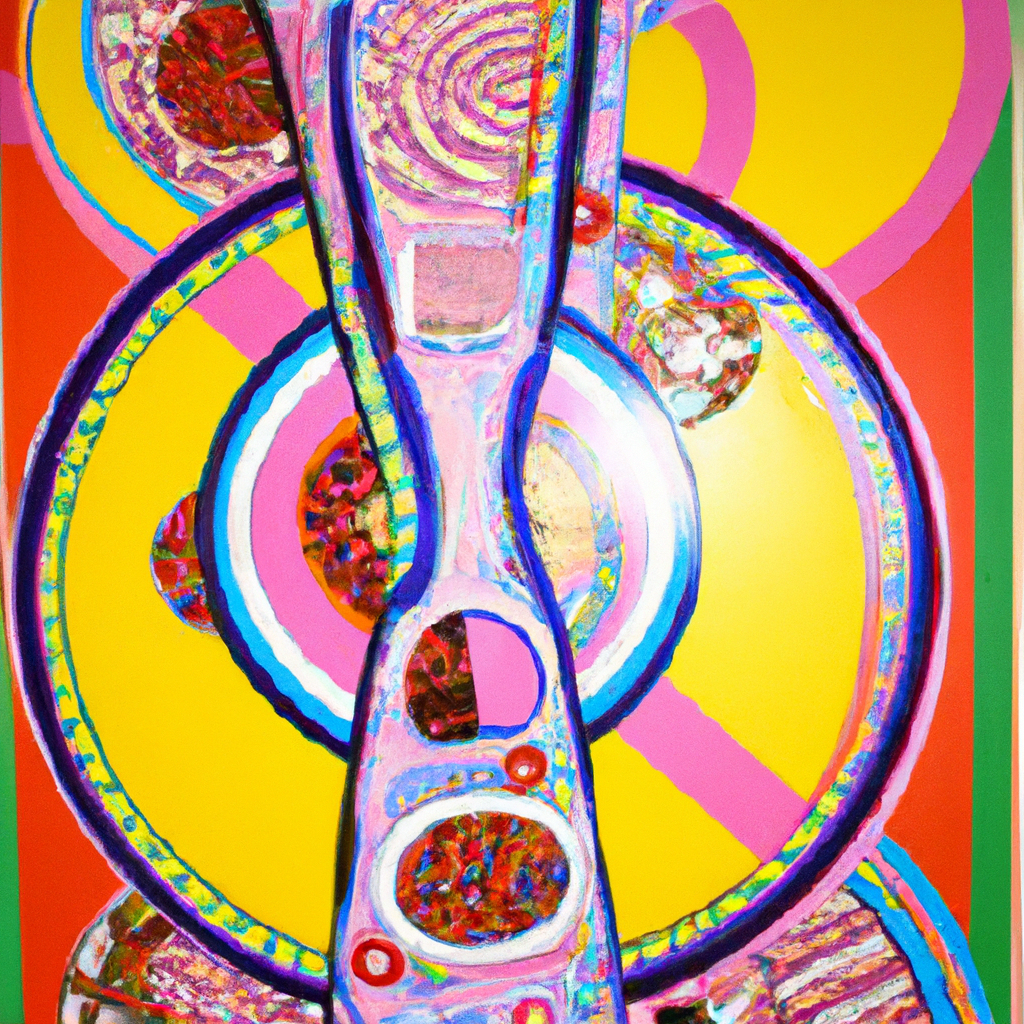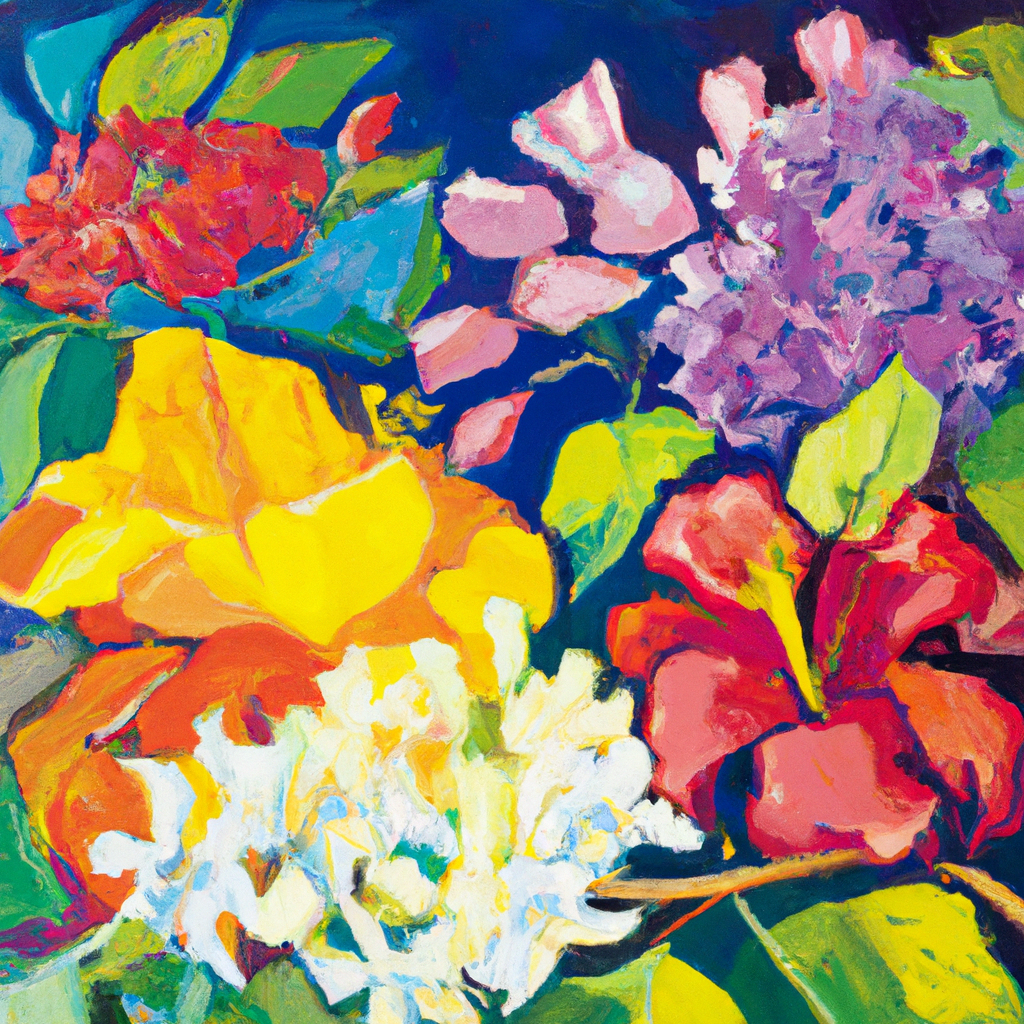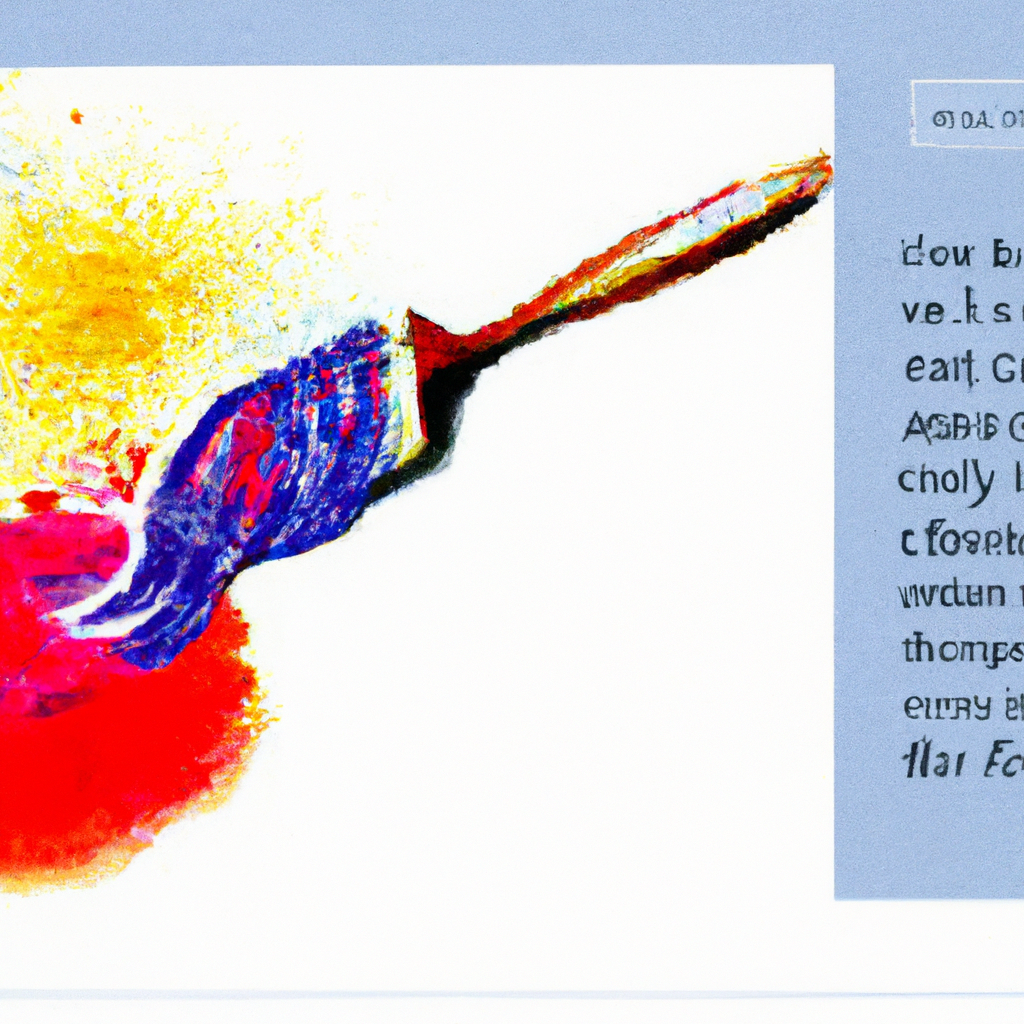Mod Podge is a popular crafting material known for its ability to seal and protect various surfaces. However, when it comes to working with gouache paint, a common question arises: can you safely apply Mod Podge over gouache? In this article, we will explore the compatibility of Mod Podge and gouache paint, providing insights and guidance for those looking to combine these artistic mediums. Whether you’re a seasoned artist or a beginner, understanding how these materials interact is essential for creating durable and long-lasting artworks. So, let’s explore the world of Mod Podge and gouache paint compatibility, and uncover the possibilities that await you!
Overview of Mod Podge and Gouache Paint
What is Mod Podge?
Mod Podge is a popular craft adhesive and sealer that is widely used in various art and craft projects. It is made from a combination of polymer emulsion and water, giving it a thick and creamy consistency. Mod Podge dries clear and creates a strong and durable bond on different surfaces, making it ideal for decoupage and other creative endeavors. It is available in different finishes, such as matte, glossy, and satin, allowing artists to achieve their desired look.
What is Gouache Paint?
Gouache paint, also known as opaque watercolor, is a versatile and vibrant medium that offers artists the ability to create opaque and matte finishes. Unlike traditional watercolor, gouache paint has larger pigment particles that produce a more opaque and solid color when applied to a surface. It is commonly used by artists for illustrations, graphic design, and fine art projects. Gouache paint is water-soluble, allowing artists to mix colors and create subtle variations in tone and shade.
Differences Between Mod Podge and Gouache Paint
Mod Podge and gouache paint are two distinct products with different purposes and properties. Mod Podge is a versatile adhesive and sealer, while gouache paint is a pigmented medium for painting and illustrating. Mod Podge is mainly used to adhere and seal various materials together, such as paper, fabric, and wood, while gouache paint is specifically designed for painting surfaces. It is important to understand these differences when considering the compatibility of these two materials.
Can You Mod Podge Over Gouache Paint?
Understanding Mod Podge Compatibility
Before Mod Podging over gouache paint, it is crucial to understand the compatibility of these two materials. Gouache paint typically forms a smooth and even surface after drying, which makes it suitable for Mod Podge application. However, certain factors such as the quality and thickness of the gouache paint, as well as the application technique, can affect the adhesion and durability of the Mod Podge layer.
Considerations Before Mod Podging Over Gouache Paint
Before applying Mod Podge over gouache paint, it is important to consider a few factors to ensure the best results. Firstly, make sure that the gouache paint is completely dry before applying Mod Podge. This will prevent any smudging or distortion of the paint layer. Additionally, consider the type of finish you want for your project, as Mod Podge is available in both matte and glossy variants. Choose the finish that complements your artwork.
Potential Effects on Gouache Paint
While Mod Podge is generally safe to use over gouache paint, it is essential to keep in mind that it may slightly alter the appearance and texture of the paint layer. Mod Podge can add a subtle sheen to the matte finish of the gouache paint, which may affect the overall aesthetic of the artwork. Additionally, applying a thick layer of Mod Podge may result in a noticeable difference in texture, as it can create a slightly raised surface.
Preparing the Gouache Paint Surface
To ensure proper adhesion of Mod Podge on gouache paint, it is necessary to prepare the surface beforehand. Begin by gently cleaning the surface of any dust or dirt using a soft brush or cloth. Then, apply a thin and even layer of gouache fixative or spray varnish to seal the paint layer. This step will create a protective barrier and enhance the adhesion of the Mod Podge. Allow the fixative to dry completely before proceeding with Mod Podging.
Application Techniques for Mod Podge on Gouache Paint
When applying Mod Podge over gouache paint, it is recommended to use a foam brush or a soft bristle brush for even and smooth application. Start by applying thin layers of Mod Podge, allowing each layer to dry completely before applying the next. Avoid excessive brushing, as it may cause the gouache paint to reactivate and blur. Apply the Mod Podge in one direction to minimize any visible brush strokes. Once the Mod Podge has dried, it will provide a protective and glossy layer to your artwork.

This image is property of images.unsplash.com.
Tips and Techniques
Test and Experiment First
Before Mod Podging over gouache paint, it is always advisable to conduct a small test on a separate surface or a spare piece of artwork. This will help you determine the compatibility of both materials and gauge the desired effects. Testing allows you to experiment with different application techniques, drying times, and finishes, ensuring that you achieve the desired outcome before applying it to your main artwork.
Use Thin Layers of Mod Podge
To avoid any negative effects on the gouache paint, it is crucial to apply Mod Podge in thin and even layers. Thick layers of Mod Podge can alter the texture and appearance of the underlying paint layer. By using thin layers, you can achieve a smooth and even application without compromising the integrity of the gouache paint. Applying multiple thin layers while allowing sufficient drying time between each layer will provide a more consistent result.
Allow Sufficient Drying Time
Patience is key when working with Mod Podge and gouache paint. It is essential to allow each layer to dry completely before applying the next. Rushing the drying process can result in smudging, bubbling, or even lifting of the paint layer. The drying time may vary depending on the thickness of the Mod Podge layers and the ambient temperature. Always refer to the manufacturer’s instructions for the recommended drying time.
Avoid Excessive Moisture
While Mod Podge is water-resistant when dry, excessive moisture can still affect its integrity and the underlying gouache paint layer. Avoid exposing the Mod Podge layer to water or excessive humidity, as it may cause it to become tacky or even peel off. Additionally, refrain from using Mod Podge on items that will be frequently handled or washed, as it may not withstand heavy use or repeated exposure to water.
Protect the Artwork
To ensure the longevity of your Mod Podged gouache artwork, consider providing additional protection. Framing the artwork behind glass or using a protective spray varnish can help safeguard the Mod Podge layer and prevent any potential damage. Furthermore, store the artwork away from direct sunlight or extreme temperature fluctuations to maintain its color vibrancy and overall quality.
Matte vs. Glossy Mod Podge
Mod Podge offers a variety of finishes, including matte and glossy. The choice of finish can significantly impact the final appearance of your artwork. Matte Mod Podge provides a non-reflective and smooth finish, allowing the gouache paint colors to retain their original matte appearance. On the other hand, glossy Mod Podge adds a subtle sheen to the artwork, intensifying the colors and creating a more vibrant effect. Choose the finish that complements your specific artwork and personal preference.
Using Mod Podge as a Sealer on Gouache Paint
In addition to its adhesive properties, Mod Podge can also be used as a sealer to protect gouache paint. Once the gouache artwork is complete and thoroughly dry, apply a thin layer of Mod Podge as a final protective coat. This will not only provide a glossy finish but also safeguard the underlying gouache paint from moisture, dirt, and UV damage. Ensure that the surface is clean and dust-free before applying the sealer.
Alternative Solutions
Sealing Gouache Paint with Acrylic Spray Varnish
If you prefer not to use Mod Podge over gouache paint, an alternative solution is to seal the artwork with acrylic spray varnish. Acrylic spray varnish provides a transparent and protective layer that prevents smudging, fading, and damage caused by moisture or UV rays. It is essential to choose a varnish that is compatible with gouache paint and follow the manufacturer’s instructions for application and drying times.
Using a UV Protectant Spray
To safeguard the colors and longevity of gouache paint, applying a UV protectant spray can be an effective solution. UV protectant sprays create a barrier against ultraviolet rays, which can cause fading and discoloration over time. Spray the UV protectant evenly on the surface of the gouache artwork, following the manufacturer’s instructions. This additional layer of protection will help maintain the vibrancy and quality of the artwork.
Applying a Clear Gouache Fixative
For artists looking for a more traditional solution, a clear gouache fixative can provide protection without altering the appearance or texture of the gouache paint. Gouache fixatives are specifically designed to protect and preserve the surface of gouache paintings. Apply the fixative in thin layers, allowing sufficient drying time between each application. This will help secure the paint layer and prevent smudging or damage.

This image is property of images.unsplash.com.
Compatibility with Different Surfaces
Mod Podge and Gouache Paint on Canvas
Mod Podging over gouache paint on canvas is possible, but it is important to consider the texture and absorbency of the canvas. Ensure that the gouache paint is completely dry and smooth before applying Mod Podge. Due to the porous nature of canvas, it may require additional layers of Mod Podge to achieve a smooth and glossy finish. Experiment on a small area or conduct a test before proceeding with your main artwork.
Mod Podge and Gouache Paint on Paper
Mod Podging over gouache paint on paper is generally a compatible combination. However, consider the thickness of the paper and its ability to withstand moisture from the Mod Podge. Apply thin layers of Mod Podge, allowing ample drying time between each layer. This will help prevent the paper from curling or warping due to excessive moisture. Additionally, avoid using too much pressure when smoothing out any air bubbles to avoid damaging the gouache paint layer.
Mod Podge and Gouache Paint on Wood
Mod Podging over gouache paint on wood is suitable, especially when you want to add a protective layer to your painted wooden surfaces. Ensure that the gouache paint is completely dry before applying Mod Podge to avoid smudging or altering the paint layer. Wood is a porous material, so applying multiple thin layers of Mod Podge is recommended to achieve a smooth and durable finish. Allow sufficient drying time between each layer for the best results.
Mod Podge and Gouache Paint on Ceramic
While Mod Podging over gouache paint on ceramic may seem unconventional, it can be done with proper preparation and sealing. Begin by cleaning the ceramic surface to remove any dirt or debris. Once the gouache paint is completely dry, apply a thin layer of Mod Podge, focusing on the painted areas. Ensure that the Mod Podge is evenly spread to prevent bubbling or uneven drying. After the Mod Podge has fully dried, apply a layer of clear acrylic spray varnish to seal the ceramic surface.
Mod Podge and Gouache Paint on Fabric
Mod Podging over gouache paint on fabric can be a unique and creative way to incorporate painted designs into fabric projects. It is essential to choose a fabric with a tight weave to ensure better adhesion and longevity. Heat-set the gouache paint on the fabric according to the manufacturer’s instructions before applying Mod Podge. Use a soft brush to apply a thin layer of Mod Podge, working in one direction to avoid brush marks. Allow the Mod Podge to dry completely before using or washing the fabric.
Mod Podge and Gouache Paint Projects
Creating Mixed Media Art
Combining Mod Podge and gouache paint in mixed media art projects can result in beautiful and intriguing artworks. By layering different materials and techniques, artists can explore the contrast between the opaque and matte gouache paint and the glossy and adhesive properties of Mod Podge. Experiment with textures, colors, and compositions to create unique and visually stimulating mixed media artwork that showcases the versatility of both materials.
Adding Dimension with Mod Podge and Gouache Paint
Mod Podge and gouache paint can be used together to add depth and dimension to artwork. Apply Mod Podge as a base or adhesive to create layers on which to paint with gouache. By layering paint and Mod Podge, artists can achieve unique effects and textures, creating a visually interesting piece. Experiment with different application techniques, such as dry brushing or sponging, to enhance the three-dimensional appearance of the artwork.
Decoupage Techniques with Gouache Paint
Decoupage, the art of embellishing surfaces with cut-out images and designs, can be enhanced using Mod Podge and gouache paint. Apply Mod Podge as an adhesive to affix the cut-outs onto the surface, and then use gouache paint to blend the design seamlessly with the background. This technique allows artists to create cohesive and intricate designs that showcase the vibrant colors of gouache paired with the durability of Mod Podge.

This image is property of images.unsplash.com.
Removing Mod Podge from Gouache Paint
Using Water and Soap
If you ever need to remove Mod Podge from gouache paint, start by gently wiping the surface with a damp cloth or sponge soaked in warm water. Allow the water to soften the Mod Podge layer, and then gently rub the surface in a circular motion to lift off the adhesive. For stubborn or dried-on Mod Podge, mix a small amount of mild soap with water and apply it to the affected area. Use a soft brush or cloth to scrub the Mod Podge gently, rinsing with clean water as needed.
Using Rubbing Alcohol
Rubbing alcohol can also be effective in removing Mod Podge from gouache paint. Dampen a cloth or cotton ball with rubbing alcohol and gently rub the Mod Podge layer in a circular motion. The alcohol will break down the adhesive properties of Mod Podge, allowing it to be removed more easily. Once the Mod Podge has been lifted from the paint layer, wipe the area with a clean cloth or sponge soaked in warm water to remove any residue.
Sanding the Mod Podge Layer
In more stubborn cases, sanding the Mod Podge layer may be necessary. This method should only be used when removing Mod Podge from sturdy surfaces or areas where slight alterations to the paint layer are acceptable. Use a fine-grit sandpaper and gently sand the Mod Podge layer in a circular motion. Be cautious not to sand too aggressively, as it may damage or remove the underlying gouache paint. Once the Mod Podge has been thinned down, wipe away any residue with a damp cloth or sponge.
Conclusion
Summary of Mod Podging Over Gouache Paint
Mod Podging over gouache paint can be a fascinating combination that allows artists to enhance their artwork and create unique effects. Understanding the compatibility between these two materials and following proper techniques is essential for achieving successful results. By considering various factors such as drying time, application techniques, and surface preparation, artists can ensure a smooth and durable Mod Podge layer over their gouache paint.
Final Thoughts and Recommendations
While Mod Podging over gouache paint is generally compatible, it is advisable to conduct tests and experiments before applying it to important or valuable artwork. Consider the desired finish, the surface texture, and the specific requirements of your project to make informed decisions. Additionally, explore alternative solutions such as acrylic spray varnish or clear gouache fixatives to protect and preserve your gouache artwork. With proper care and attention, Mod Podge and gouache paint can be used together to create stunning and lasting works of art.




